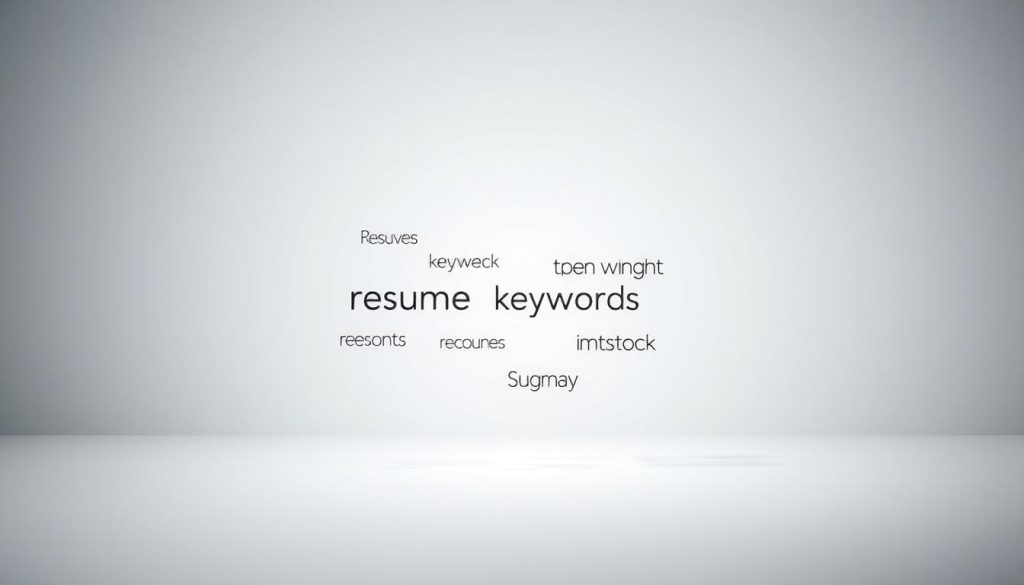Entering today’s job market calls for a simple, steady plan. Start by setting clear career goals so each action moves you closer to the right role.
Build a concise online personal brand and a portfolio that matches your resume. Recruiters in France often scan profiles, so showcase outcomes, certifications, and short project samples.
Use a balanced mix of channels: job boards for discovery, job alerts for speed, LinkedIn to network, and specialist recruiters for insider access. Attend virtual and in-person fairs to gain momentum.
Keep applications targeted. Tailor each cover letter and CV to the role, prepare proof-rich answers for common interview questions, and track prospects with a simple pipeline. Small, daily actions win over time.
Table of Contents
Key Takeaways
- Set clear goals to guide every step of your process.
- Align your online portfolio with your resume to boost visibility.
- Mix channels: boards, alerts, LinkedIn, recruiters, and fairs.
- Tailor applications and prep stories for interviews.
- Keep a weekly routine to review alerts and refine keywords.
Why job search strategies matter today: trends shaping the current job market
AI and humans now share the hiring table, so candidates must prepare for both automated scans and interviewer questions.
« A 2023 SHRM survey found 70% of HR professionals use AI for recruiting and selection. »
AI in hiring and resume scanners: what candidates must know now
Automated systems screen resumes against set criteria. Mirror the posting language and lead with quantified wins so filters flag your profile.
- Use AI tools to compare your résumé to descriptions, but only add real experiences.
- Prioritize measurable impact—percentages, timelines, and cost savings make results scannable.
- Refresh profiles quarterly to reflect new tools and certifications that matter in your industry.
Soft skills, cultural intelligence, and hybrid work readiness
LinkedIn reports 92% of talent professionals rank soft skills equal to technical ones. Show examples of communication, adaptability, and problem-solving with clear outcomes.
- Describe how you helped build inclusive teams or improved psychological safety—this matters to employers.
- Highlight hybrid readiness by noting results from remote and in-office projects.
- Track market trends and be ready to pivot to adjacent roles when timelines or scopes change.
Practical tip: Comment thoughtfully on company updates to signal awareness to potential employers and stay visible as trends evolve.
Clarify your direction: self-assessment and career goals that guide your search
Start by mapping your strengths and preferences to clear outcomes you can measure.
Self-knowledge makes applications and outreach far more focused. Use SMART goals to turn broad ideas into specific targets with timelines and metrics. Complement that with personality or skills assessments to reveal working styles and preferred environments.
Audit your strengths, values, and preferred tasks. Then create 2–3 SMART career goals that state role level, industries, and learning milestones. This keeps your job searching intentional and measurable.

- List transferable skills with one-line examples that prove impact.
- Build a short target-company list aligned to culture and growth potential.
- Set weekly 60–90 minute blocks for focused outreach, tailored applications, and learning sprints.
Use campus or community career services for mock interviews and résumé reviews. Validate assumptions with informational interviews and keep a simple wins log to record results from projects or volunteering. Revisit goals monthly so your plan stays realistic and energizing.
Build a standout personal brand and online portfolio
Stand out by turning project work into short, verifiable stories that show your impact. Keep descriptions tight: role, tools, timelines, and a clear metric. This helps professionals and employers quickly assess fit.
Optimize LinkedIn to match your resume and target roles. Align your headline, About, and Experience with your CV. Weave relevant keywords from postings into summaries and skills so platform discovery improves.
Showcase projects, certifications, and quantified impact
- Craft a one-sentence personal brand statement that ties strengths to outcomes.
- Pin top posts and add Featured items: case studies, GitHub repos, and certificates.
- Ask for short testimonials from managers or clients to validate specific skills and results.
- Post useful insights weekly to demonstrate expertise and attract opportunities.
- Keep titles, dates, and achievements consistent across platforms to match your resume.
Want a quick guide to refining your presence? See this practical personal branding checklist to boost visibility and make your portfolio work for your career.
Networking that opens doors: online, offline, and referrals
A well-tended network often converts curiosity into concrete opportunities. Start by offering value: comment on posts, share useful articles, and help without asking for anything in return.

Strategic LinkedIn engagement and meaningful outreach
Personalize connection requests with a shared interest or context. Mention a mutual contact or recent post to raise acceptance rates.
Engage first: like and comment for several days before messaging. A warm approach beats cold outreach.
Informational interviews, meetups, and job fairs
Schedule short informational interviews to learn about role scope and team needs in your field. Attend meetups and fairs, then follow up within 24–48 hours.
How to earn and use employee referrals effectively
- Treat networking as value-first; build genuine relationships before asking for a referral.
- Prepare a concise profile and a pre-drafted note colleagues can forward to a recruiter.
- Track outreach and follow-ups so relationships grow steadily and lead to more opportunities.
Use specialist recruiters and agencies to navigate the market
A focused recruiter can translate your skills into opportunities you might not find alone. Specialist agencies hold deep industry knowledge and active pipelines that surface relevant roles quickly.
Partnering with niche recruiters for role-market fit
Start with a tight brief: share a sharp resume, desired seniority, locations, compensation, and clear deal-breakers. This helps the recruiter present accurate matches and speeds decisions.
Schedule short, regular check-ins to update achievements and hear market insights. Ask how they market you and what proof points clients value most.
« Treat the recruiter relationship as a two-way process—be responsive, transparent, and clear about timelines. »
- Pick agencies focused on your industry and role family for better pipelines and intel.
- Keep job board profiles complete and keyword-optimized—many recruiters source daily from those platforms.
- Request feedback after submittals to understand where you rank in the market and adjust quickly.
Combine recruiter channels with your own targeted outreach to maintain momentum. For deeper industry intel, see this practical guide on industry expertise.
Optimize for AI: resume keywords, data-driven achievements, and job title variations
Make your résumé speak data: let numbers prove impact before skills fill the page. AI resume scanners shortlist candidates using set criteria, so compare your résumé to job descriptions and add authentic keywords that appear across several postings.

Tailor the top third to speed tailoring
Keep a flexible master résumé and edit the headline, key skills, and summary bullets for each application. This saves time and keeps the rest intact while matching the posting language.
Write a concise, authentic cover letter
Link one clear result to a company goal or recent announcement. A short, sincere cover letter explains why the role fits and adds context that AI cannot judge.
Map alternative titles to broaden matches
Build a simple title map (e.g., Account Manager, Client Success Manager) so your profile appears for related openings. Validate your chosen keywords by scanning three to five similar postings and prioritizing recurring phrases.
« Lead bullets with outcomes, then the how and tools—use numbers to make impact unmistakable. »
| Action | Why it works | Quick tip |
|---|---|---|
| Master résumé + edit top third | Matches AI filters fast | Save reusable impact bullets |
| Mirror essential keywords | Improves parsing and recruiter clarity | Use exact phrasing from postings |
| ATS-friendly format | Prevents parsing errors | Avoid images, complex tables |
Leverage platforms that work: job boards, job alerts, and timing
Choose three to five core platforms and configure precise job alerts by title variations, location, seniority, and key skills. This keeps your inbox focused on high-fit openings and saves time.
Block a short daily review window to triage alerts, shortlist top-fit opportunities, and submit tailored applications. Use filters for experience level, salary, and remote options to avoid noise.
Setting smart alerts and review routines
Refresh alerts weekly to refine keywords as you learn how employers label roles. Track which platforms yield interviews and shift effort toward the best performers.
Timing applications to increase recruiter attention
Batch applications at high-response times—early Monday or right after lunch—to gain more recruiter attention during inbox peaks. Optimize profiles on job boards with clear titles and achievement-rich summaries so recruiters can find you proactively.
| Action | Benefit | Quick tip |
|---|---|---|
| Set alerts on 3–5 platforms | See better-fit opportunities | Use title variations and filters |
| Daily review routine | Faster, tailored applications | Limit to 30–60 minutes |
| Time applications | Higher open and response rates | Send early Monday or after lunch |
Targeted applications: research employers and narrow your focus
Choose companies where your skills solve clear problems and your values match the team. Narrowing your outreach to a focused set of targets raises your chance of meaningful interviews and better offers.

Aligning your profile to company needs and values
Build a shortlist of potential employers whose products, stage, and culture suit your long-term goals. Study org charts, press, and team blogs to learn priorities.
Map your experience to the role’s top outcomes. Then tailor your resume to surface proof you can deliver results fast.
- Write a cover letter that links your interest to current projects and explains how you will contribute from day one.
- Mirror company language—customers, tools, and metrics—so your application feels native to the team.
- Cap weekly applications to prioritize depth: research, personalization, and strong, relevant examples.
| Action | What to check | Quick result |
|---|---|---|
| Shortlist employers | Stage, products, culture | Higher interview quality |
| Map experience to outcomes | Top 3 role priorities | Stronger resume fit |
| Customize cover letter | Company mission or initiative | Clearer hiring interest |
Track responses by employer type and role. Keep a living doc of tailored bullets to speed future applications and to double down where your profile resonates. For freelancers, see how to maximize your freelance advantage in client outreach and positioning.
Interview with confidence: prepare behavioral stories that prove your skills
Collect short examples that show how you solve problems, lead change, and collaborate well. These ready stories reduce nerves and let you focus on the interviewer.
Use the STAR method to structure answers to common interview questions. Briefly set the Situation and Task (10–15 seconds), then spend most of your time on Actions and Results.
STAR: collaboration, problem-solving, change
Draft 6–8 STAR stories that spotlight teamwork wins, tough problem-solving, conflict resolution, and change leadership with measurable results. Tailor each to the role by naming tools, stakeholders, and metrics your employers care about.
Post-interview follow-up that moves you forward
Send a same-day note thanking the panel, restating one or two relevant strengths, and attach a short sample if it adds value and draws attention to your application.
- Practice aloud and record yourself to refine pacing and time each story.
- Prepare a quick walkthrough of your resume to link past experience to this role.
- If timelines slip, check in after a week with a value-add instead of a generic ping.
- Keep concise notes from each conversation to improve future interviews in your career.
Stay competitive: learning, internships or freelance, and career services
Small, hands-on projects can fast-track credible experience and meaningful connections. Pick activities that map to your long-term career goals and produce tangible results you can show in weeks, not months.
Courses and certifications that signal readiness
Choose 1–2 courses or certifications that match target role requirements and add them to Education/Certifications with expected completion dates. Prioritize programs recognised in your industry and practical workshops, including communication and leadership modules.
Publish brief takeaways from each course to demonstrate momentum. This signals readiness to hiring teams scanning your profiles and helps when networking after events.
Internships and freelance projects to build credible experience
Add hands-on work fast through internships, freelance, or volunteering. Pick projects that deliver measurable outcomes you can list as proof on your résumé.
- Use platforms that host project challenges or open-source issues to build artifacts.
- Join professional associations and local communities to meet peers and hiring managers.
- Leverage career services for mock interviews, résumé reviews, and employer introductions.
Allocate weekly blocks of time for learning, building, and outreach. Reassess monthly which activities yield the best returns and pivot to overcome inevitable challenges. Nurture the relationships you form—these often convert into referrals and new opportunities later.
Conclusion
Strong, simple routines win: use a short weekly plan to refine materials, research top employers, and apply with care.
Keep tailoring your resume and cover letter so potential employers see measured impact. Spend time on networking, timely alerts, and thoughtful follow-ups to compound results.
Invest in soft skills and cultural intelligence alongside technical abilities. Practice answers to key interview questions and record recent wins in your portfolio so you prove readiness fast.
Track what works, drop what doesn’t, and revisit your career goals monthly. Steady, focused action turns opportunities in France’s changing market into real offers—be patient and persistent.
FAQ
What are the top trends shaping today’s job market?
AI-powered screening, hybrid work, and a stronger focus on cultural fit are reshaping hiring. Recruiters increasingly use automated resume scanners, while employers look for adaptable professionals who bring both technical skills and emotional intelligence. Staying current with industry trends and platform updates helps you remain visible to the right people.
How should I adapt my resume for applicant tracking systems (ATS)?
Use clear, relevant keywords from the job posting, include measurable achievements, and stick to common headers like Experience and Education. Avoid complex formatting, graphics, and unusual fonts. Match job-title variations and list certifications or tools that demonstrate role fit to increase ATS match rates.
What are practical ways to improve my personal brand online?
Align your LinkedIn headline and summary with your resume and target roles. Publish short posts about projects or lessons learned, add portfolio items or case studies, and collect endorsements and recommendations from managers or clients. Consistent messaging across platforms builds credibility.
How can I set SMART career goals that guide my efforts?
Make goals Specific, Measurable, Achievable, Relevant, and Time-bound. For example: “Gain a data-analytics certificate and complete two freelance projects within six months to qualify for mid-level analyst roles.” Break goals into weekly actions and track progress to stay focused.
What’s the best approach to networking online and offline?
Combine targeted LinkedIn outreach with in-person meetups. Send personalized messages, ask for short informational chats, and follow up with value — such as a relevant article or an introduction. Attend industry events and job fairs to meet hiring managers and generate referrals.
When should I work with a specialist recruiter or agency?
Engage niche recruiters when you target specific industries or senior roles. They offer market insights, access to unadvertised roles, and negotiation support. Choose recruiters with proven placements in your field and maintain clear communication about your goals and timeline.
How do I tailor applications without rewriting my resume each time?
Maintain a strong base resume and create modular sections for different roles. Swap in role-specific bullet points, adjust your summary, and add relevant keywords. This saves time while keeping each submission targeted to the employer’s needs.
What should I include in a cover letter to add genuine value?
Briefly explain a measurable accomplishment, tie it to the company’s goals, and show understanding of a known challenge or opportunity. Keep it concise, specific, and focused on how you will contribute rather than repeating your resume.
How can I map alternative job titles to expand opportunities?
Research similar roles in your industry and list common synonyms and related titles. Use those variations in searches and on your profile to capture more matches. For example, “customer success manager” may appear as “client success” or “account manager” in some firms.
What platforms and routines boost discovery by employers?
Combine major job boards, LinkedIn, and niche industry sites. Set smart alerts with tailored keywords and review new listings daily. Early applications often gain more recruiter attention, so checking postings in the morning helps you apply quickly.
How do I research and target specific employers effectively?
Study company values, recent news, and product roadmaps. Read employee reviews and LinkedIn profiles of team members. Tailor your messaging to address a company need or cultural fit and reference specifics during outreach or interviews.
What is the STAR method and how does it help in interviews?
STAR stands for Situation, Task, Action, Result. Use it to structure behavioral stories that demonstrate collaboration, problem-solving, and impact. Keep each example concise, focus on your role, and quantify outcomes to make your case compelling.
What should I do after an interview to improve outcomes?
Send a brief, personalized thank-you note reiterating a key point you discussed and how you can add value. If you don’t hear back, follow up politely after the timeline they provided. Use feedback to refine future interviews.
How can I stay competitive with limited professional experience?
Take targeted courses and earn certifications, and pursue internships or freelance projects that produce measurable results. Build a portfolio showcasing outcomes and request recommendations from supervisors or clients to validate your work.
When is it worth attending job fairs and meetups?
Attend when companies you target are present or when events attract hiring managers in your field. Come prepared with a concise pitch, tailored materials, and follow-up messages to turn brief conversations into meaningful connections.
How do referrals work and how do I earn them?
Referrals come from employees who recommend you to their employer. Build genuine relationships, demonstrate your skills through small collaborations or volunteer work, and ask for introductions after you’ve established rapport. A warm referral often accelerates hiring decisions.





